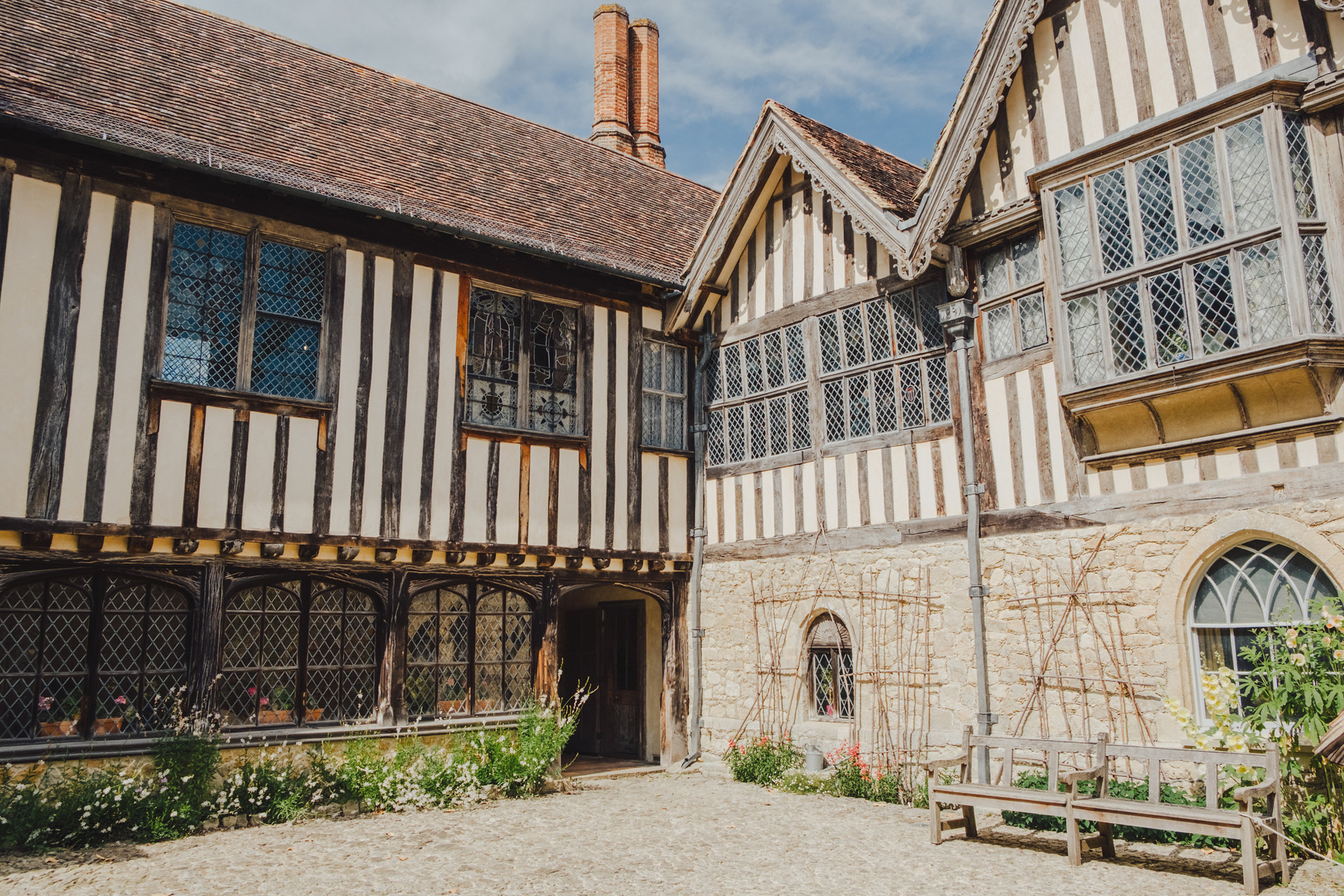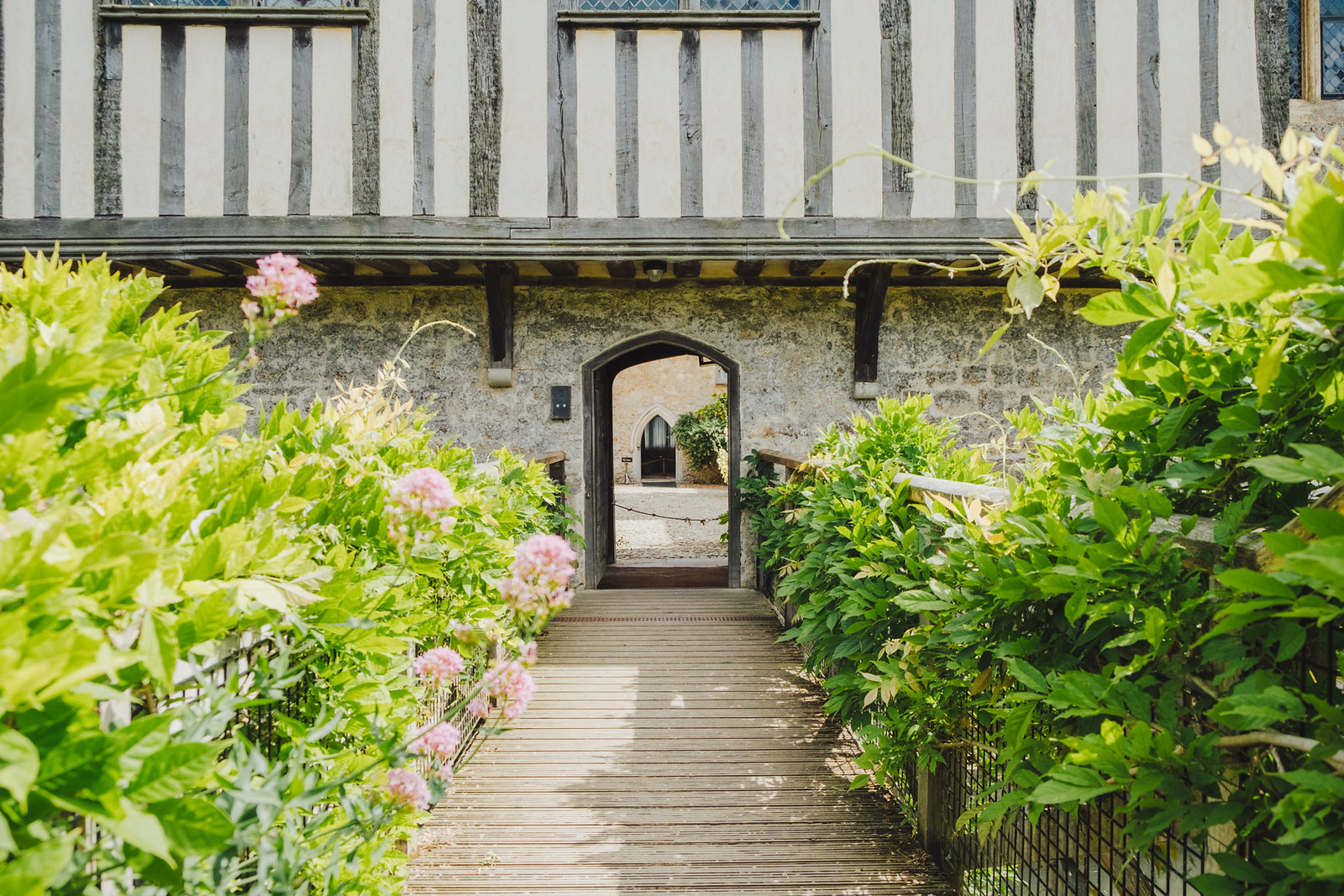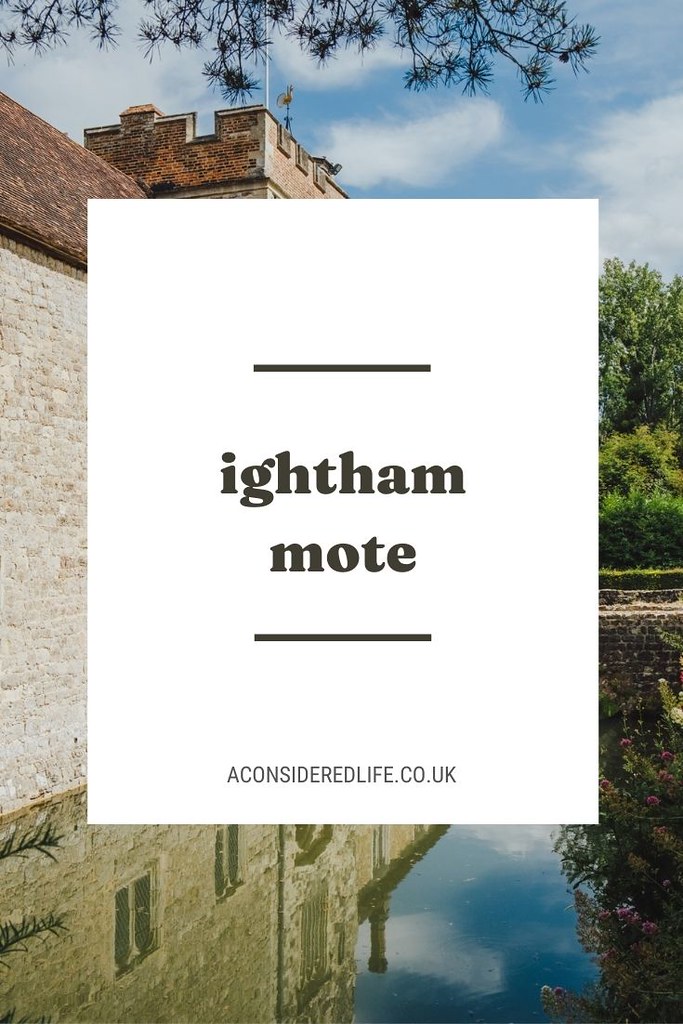

Our intention was to stop off at Ightham Mote on our journey back to Birmingham from visiting Kent. It would be a rest stop with a point of interest where we could enjoy a walk around the gardens and eat our lunch; taking it in turns to explore the the house.
A lesson was learned this day. I did check the National Trust's website but there was a misunderstanding over Ightham Mote's dog-friendly status. You're free to enjoy walks in the 580 estate all year round. But the grounds themselves (the actual Ightham Mote) are not dog-friendly. Except for 4 months in winter when the house is closed and the gardens are presumably rather unattractive... So really, Ightham Mote isn't dog-friendly.
We visited on our return trip home on a day where the temperature was pushing 30°C. So a walk around the estate wasn't a good idea if we didn't want to risk sun stroke. While my companion and I rested in the shade, my partner headed in to take some photographs.


Ightham Mote is a 14th-century moated manor house with formal gardens and estate. Described by architectural writer John Newman as "the most complete small medieval manor house in the county". It's a wonderful example of how houses would have looked in the Middle Ages.
The house has more than 70 rooms, arranged around a central courtyard, which is surrounded by a square moat with three bridges. Unlike similar courtyard houses of its time, which have been demolished; Ightham Mote has most of its original features. These include unusual and distinctive elements, like the porter's squint, an open loggia, and a 19th century dog kennel.


The formal gardens are quaint. They feature a long border of traditional flowers including sweet Williams, campanulas, and pinks. There are vegetable patches with herbs, and a walled orchard with apple trees dating back to the 13th century. A stream flows through the grounds of Ightham Mote, feeding the North Lake. It follows onto the mote before emptying into the South Lake.
The less formal areas of the garden are where you can see the gardens really bloom. In Spring, snowdrops, hellebores, crocuses, and daffodils can be witnessed waking up. Moving into summer, the cherry blossom bursts into bloom with camellias and rhododendrons following soon after. The garden starts to fill with new shapes from fresh foliage and bright colours from the flowers.

There are several walks you can take around the estate. From short 4-mile walks to more challenging 8 mile hikes. The walk between Shipbourne and Fairlawne is around 4.5 miles and takes you through ancient woodland in the Kentish countryside. If you want to visit Knole Park, another National Trust property, there is an 8.5 mile walk that joins the two. There is a map on-site or you can find out more here.
Inside the walls of Ightham Mote, there is a lawn ideal for picnicking. If you're visiting with your companion, like we did, there are plenty of large picnic benches directly outside the entrance. This is where we sat to eat out lunch before continuing on our journey back home.

